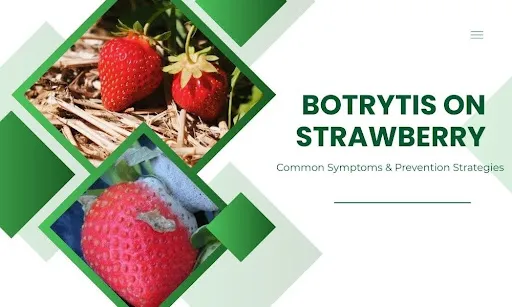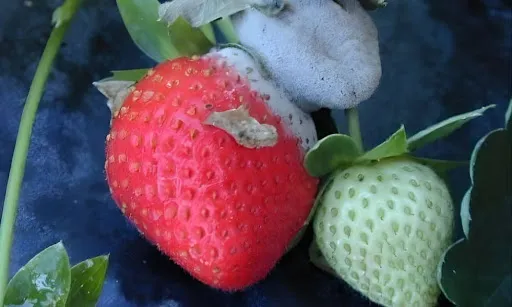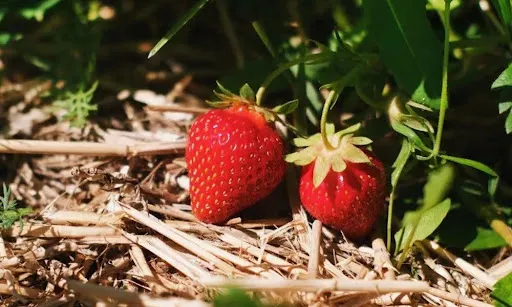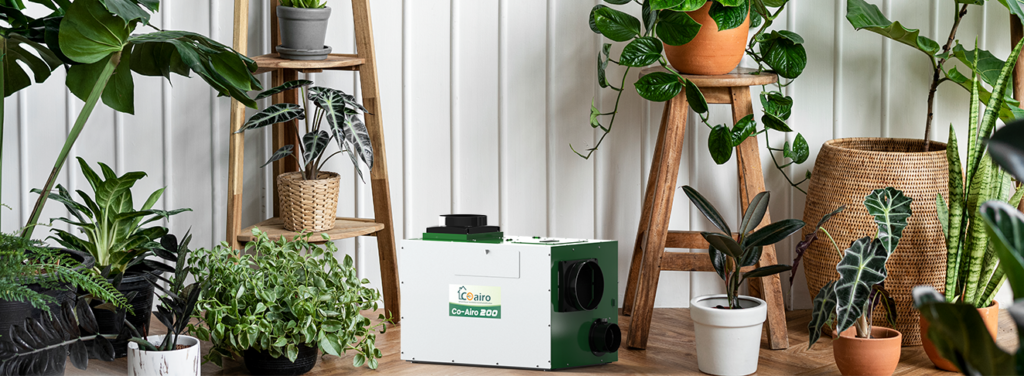Are your strawberries covered in gray mycelium? This is due to the gray mold also called Botrytis cinerea.
The Botrytis cinerea affects the strawberry’s leaves, fruits and flowers and causes huge economic losses. The Botrytis spread because of high humidity, strawberry low to the ground habit and poor air circulation.
In this article, you’ll explore Botrytis on strawberry. You’ll discover the signs and methods to prevent Botrytis growth.

Common Symptoms & Signs of Botrytis on Strawberries
The fungus infects the flowers and berries especially when the humidity is high. The cool and humid conditions provide the best environment for gray mold development. The gray mold covers the leaves and flowers of strawberry plants. Here are some common Botrytis strawberry symptoms:

Soft Spots
Botrytis makes the strawberry soft and some areas of the strawberry surface will be slightly sunken. These spots look watery or bruised at first but they turn light brown as the tissue breaks down. The strawberries become soft and mushy which causes fruit rot.
Gray Mycelium
The main symptom you see of Botrytis is the appearance of gray, fuzzy mycelium on the infected fruit. This mold contains millions of spores that spread easily with wind, touch or rain splash. Gray mycelium usually forms after the berry has stayed wet for too long or during high humidity.
Water-Soaked Lesions
The Botrytis can cause water soaked lesions under the calyx. These lesions look like gray mold and infect both green and red strawberries. The lesions enlarge gradually. The infected berries are soft first then become hard in the absence of humidity.
Environmental Conditions That Promote Botrytis On Strawberry
Many environmental factors trigger the growth of Botrytis on strawberry plants, some of those factors are:
High Humidity
Strawberries are planted in cool and moderate humidity. Strawberries can be cultivated at optimum humidity of 60 to 75% RH. Your green house will be very humid and cold. These environments boost the gray mold growth.
Overhead watering practices can keep the fruit moist for several hours. These practices can provide a suitable environment for Botrytis to grow and decay strawberry plants.
Poor Airflow
The dense foliage of strawberry traps the air and moisture around the leaves and fruits. The moisture builds up inside the greenhouse when there is limited air circulation. This keeps the strawberry fruits, flowers and leaves wet for several hours.
The poor airflow gives the ideal environment for Botrytis. Poor air flow also prevents the plants from drying out quickly after the rain, irrigation and dew.
Low To The Ground Habit
Strawberry plants grow very close to the soil surface naturally. The fruits rest directly on the ground or near the ground. This low growth nature makes strawberries more vulnerable to diseases like Botrytis.
The moisture, soil splashes and poor airflow easily reach the fruit. The strawberries remain damp for long periods when they touch the wet soil or stay in humid pockets near the ground. This creates the ideal conditions for fungal infection.
How to Treat Botrytis on Strawberry
The right method to prevent Botrytis can give you effective results. Here are some of the simple and effective methods of strawberry gray mold treatment:

Remove Infected Fruit
The Botrytis spores can infect the surrounding flowers and fruits. So, it is helpful to remove infected flowers, fruits and leaves. Handle the infected strawberry with care as the spores can spread easily. Discard the damaged or injured portion outside of your growth medium.
Clean the areas and soil to remove any spores or damaged parts from the ground. As strawberry fruits have a low to ground habit and it becomes infected easily.
Improve Air Movement
The dense vegetation of strawberry can retain the moisture and air as well. The poor airflow and high humidity accelerates the growth of Botrytis.
So, the proper air circulation helps to prevent Botrytis proliferation. You can install ventilation fans or dehumidifiers inside the greenhouse. Cut the extra branches or leaves to create the space between strawberry bushes.
Follow proper spacing guidelines between different plants to reduce humidity.
Lower Greenhouse Humidity
High relative humidity, usually above 95%, is the best condition for the growth of the Botrytis. It can lead to high humidity and poor air flow if there is no proper ventilation introduced in the greenhouse.
It may cause excessive humidity and lack of air circulation when there is no adequate ventilation implemented in the green house.
To avoid Botrytis in strawberries, the first task that you must undertake is to keep the humidity at the lower level. Various devices such as ventilation fans or dehumidifiers can be used. The moisture content in the greenhouse will be minimised using these tools.
Prevention Strategies for Large & Small Growers
Mulching
Gardeners use mulching to protect plants from cold and Botrytis. Mulching materials like pine needles, straw or plastic creates a barrier between soil and land.
This technique keeps the strawberry off the ground. Mulching also reduces the chances of soil splash during the rain or irrigation.
Gardeners can use clean straw for this process as the straw remains dry. Other mulching material can get saggy and stay wet for long times which can cause gray mold proliferation.

Drip Irrigation
Drip irrigation is the process in which the cultivators provide water to the root zone. This method keeps the leaves, flowers and fruit dry. This is useful in those regions where the leaves and flowers stay wet for several hours.
Overhead irrigation can spread the spores of Botrytis. The drip line system provides balanced root zone moisture without creating puddles.
Recommend Tools to Control Humidity
Unless you keep the humidity medium, Botrytis on strawberries will not spread. The gray mold will develop in the greenhouse when the humidity exceeds 80% RH.
The growers should maintain a low humidity of less than 80 percent in the greenhouse. Utilize the equipment such as dehumidifiers or ventilation fans. The Coairo dehumidifiers lower the humidity levels and improve the airflow inside the growth medium.

Conclusion
The Botrytis affects the strawberry’s leaves, fruits and flowers especially in the cool and humid environment.
You can notice soft spots, gray mycelium and water-soaked lesions on strawberries as these are the symptoms of the Botrytis growth.
You can remove infected parts, improve airflow and lower humidity levels to prevent Botrytis proliferation.


